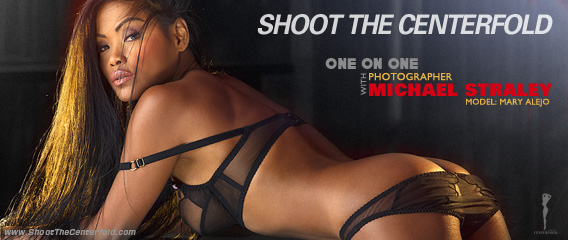Michael Straley One on One with Shoot The Centerfold
Photographer Michael Straley recently went on a one-on-one with Shoot The Centerfold’s Jarmo Pohjaniemi for an awesome day of making magic behind (and in front of) the camera. Micheal’s very passionate about his photography and doesn’t like taking “no” for an answer when it comes to getting top images. His energetic approach to a project means a great day of shooting for all.
After a selection process that included top agency, glamour and Playboy models, Michael’s model choice for the day was STC’s very own Mary Alejo. Jarmo spoke with Michael before and after the shoot to get his take on how the day’s shoot went.
Interview:
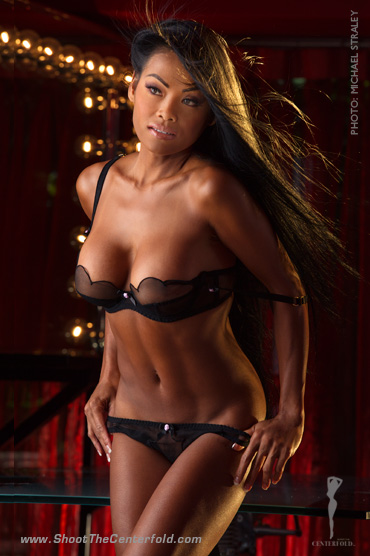 STC: Michael, it’s a pleasure to have to you here with us and despite it being a rainy Monday, you seem upbeat and walking around with two fully-loaded Nikons.
STC: Michael, it’s a pleasure to have to you here with us and despite it being a rainy Monday, you seem upbeat and walking around with two fully-loaded Nikons.
Michael: I sure am! I’m on the hunt for that magical light I see in the pages of Playboy. I am going to use what I learn here to take my images to the next level – as I told you on the phone, Jarmo, I chose you because I love what you do with light and I am counting on you not to let up on me – I need you to pretend you are an editor – don’t let me get away with anything! Just don’t make me cry.
STC: Well, we’re quite well equipped for anything up to 220w, but I can’t guarantee anything if the temperature goes up when Mary starts with her sexy poses and performance. We’ll have to check the temperature and play things by ear because I can’t promise anything once Mary gets in front of the camera! It’s 9a.m. – shall we start?
Michael: Yup, I’m locked and loaded and ready to go – let’s go for it! How do we start our day together?
STC: Why don’t we take a walk around the house and see if there’s a specific location you’d like to use for today’s shoot?
Michael: This really is an incredible place there are so many places I’d like to shoot! I like the stairs, but the make-up room seems to offer a challenge because it has a magical touch and a lighting that I’d like to capture. The color in the walls in there is intense!
STC: Very good. Let’s start building the lighting from scratch. This way you’ll learn the way it’s done every step of the way and why we do things a certain way. We at the STC would like to believe that when you get your hands dirty, you learn more than just watching the show itself.
Michael: I think you’re right and that’s why I’m here – for learning the process. I was really surprised at how you adjust and use the back lights and hairlights. I done them a little differently in the past but I came to learn new techniques and I sure am getting them!
It begins…
STC: After two hours of extensive planning and setting lights, we are finally ready to start testing and see what they all do. Our model, Mary, is ready with her makeup and hair, while we’ve set our Nikons to 1/125, f/ 5.6 and ISO 200.
Michael: I‘ve got two different camera bodies to choose from and I would like to shoot tethered to Lightroom.
STC: You got it… shooting tethered gives you an advantage by letting you evaluate the image right way for more accurate results. Viewing the results on your camera’s LCD screen is recommended for reference evaluation only. You just cannot see the detail as well as you can on a computer screen.
[Mary walks in]
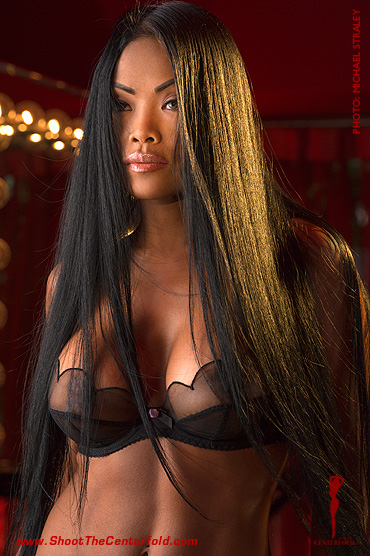 Mary: Hey guys, I’m ready to shoot.
Mary: Hey guys, I’m ready to shoot.
Michael: Hi Mary, you’re looking lovely! It’s not just anybody that looks as good in person as they do in pictures, but you sure do.
Mary: Thanks, Michael! That’s very kind of you.
STC: Alrighty then… let’s just take few sample snapshots to see where to we stand. We’ve measured the lights and dialed them in to perfect accuracy with a light meter, but we need to bear in mind that different skintones and hair colors vary. At this point, slight adjustments to CTO warming gels might be necessary.
Michael: Let’s take few shots here; Snap one, and… snap two. Let’s see what pops up in a Lightroom. [looks at screen] Very nice!
STC: We’re almost there… we need to adjust the hairlight on camera right due to Mary’s dark-colored hair, and let’s flag out the bottom part of the table stand. I think it’s showing too much in some of the poses and first impressions are right ones most of the time.
Michael: I agree. Also, getting the right contour with shadows has been an important lesson that I’ve learned today on top of a lot of other valuable secrets. My images have always been pretty bright front and back – I am going to really be looking to use light differently from now on. It really makes a big difference when you look at the subject, the foreground and the background separately. These images we have taken are already showing the depth I want, highlighting the subject better, and making it more interesting.
STC: You’re absolutely right. Imagine the space in front of you as if it were composed of several separate layers. Each layer represents a different spatial element that can be adjusted with different color tones and lighting values. Mostly, less is more, but be prepared to add lighting elements as necessary. Clients have a variety of tastes that can make things challenging, especially when it’s raining outside as it is today.
[The shoot progresses for a few hours]
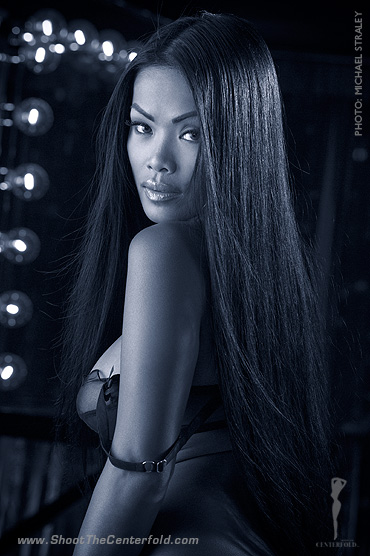 STC: Michael – make sure to fill the frame, tilt the camera if you have to – but fill it – no cropping…. More…. The coaching goes on. We have accomplished a lot so far. I think those last poses were really great.
STC: Michael – make sure to fill the frame, tilt the camera if you have to – but fill it – no cropping…. More…. The coaching goes on. We have accomplished a lot so far. I think those last poses were really great.
Michael: Yes, they were. I’m beginning to see the lighting layers a bit more easily. In the past, I stuck to just the three levels of foreground, subject and background without giving much thought about how they worked together to become integral pieces of the image.
Mary: When’s lunch? We have been shooting for two hours already and I don’t know about you guys, but I’m getting hungry.
STC: Thank god we have a female to remind how important is to feed your crew and the model! Photographers get so deep into the zone when shooting that they sometimes forget to feed everybody on time. There’s no way you’ll get the best results possible when your people are hungry! How about some sushi for everybody?
Mary: You just read my mind! Let’s take a break and order some food.
[Jarmo calls the sushi bar]
Break time…
STC: Okay, while we’re waiting for the food to get here, let’s discuss and evaluate the images we’ve shot so far. There are some technical issues about posing and lighting we should discuss.
Michael: It almost seems when you are lighting a model this way, it’s like a product shot. Everything is so controlled to the last, littlest detail. Jarmo, one of the reasons I contacted you was I could never figure out how you did the lighting of the abs on the models – my models always move around quite a bit so as soon as I get it set up it is gone. Now you have shown me in this kind of work you need to be able to control many of the movements pretty tightly to maintain the lighting we have set up.
STC: Yes, you’re right, but a certain degree of movement is also allowed. You just need to make sure that the lights do not fall too far off their target when shooting in controlled situation like this. Knowing what the lights do and don’t do gives you a good understanding and opportunity to get magical pictures. Let’s take a look at what we’ve gotten so far. (Michael, Jarmo and Mary look at the images)
[Sushi arrives – the crew enjoys lunch]
 STC: Okay, that was a good lunch. Let’s take a closer look and posing and techniques.
STC: Okay, that was a good lunch. Let’s take a closer look and posing and techniques.
Michael: That lunch was so great but I barely remember what I ate! I’m very excited and ready to dive back into our set and keep shooting. One thing I’ve learned has to do with movement and Jarmo’s philosophy that you need to “learn to look before you shoot” – it works wonders. Posing is also something that can either make or break your shot. I think the mistake that a lot of photographers make is that they think model’s bodies are all the same and that if a pose works for one, it’ll work with another. That’s not true. To get the best images, you really have to understand basic anatomy and while each model’s anatomy might look the same, it’s very different and singular on an aesthetic level. I thought I had paid attention to poses before, but I will from now on I am going to spend even more time!
(Learn more about posing using Shoot The Centerfold posing guides.)
Mary: Posing skills also make you a much better model than just shooting and hoping for the best. I think that natural poses work wonders when the moment is right, but the real art of posing comes with experience and the guidance of an excellent photographer.
Michael: Photographing a model who knows the art of posing like you, Mary, is an incredible experience. I think STC should not only sell the posing guides for photographers, but open up a modeling agency as well! (laughs). Some of the nicest shots we have gotten today are when you are just relaxing from a pose however and thinking the camera is not tracking you – like that last one we got – love the expression and the lighting was great too!
Mary: Just as photographers can tell if a model’s experienced or not, it’s the same for models. If a model has been in front of the camera enough, they can tell when a photographer has experience and knows what they’re doing. I think that photographers and models should invest little more time in a mutual understanding of poses and how to make images look right. It does not take much effort to pay attention to those little details that really matter and make the photography look good. Nobody, whether they’re a photographer or model, starts off knowing what to do, but with effort and experience, both can work together to make outstanding photos.
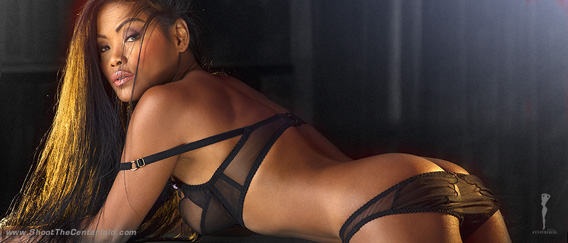
Michael: I like the fact that not only have I learned photography, but I’ve come to realize that planning the shoot and considering the facts is just as important – if not more so – than the actual shoot. The more planning you do in advance when you’ve got some time and a pencil in front of you, the easier it is to get the job done when you’re behind a camera. Producing the set and adjusting everything took quite a while today – a bunch of testing, and adjusting, and I am so glad I was here to be able to see it done from scratch – it clearly shows in the results and that’s what I need to be able to do on my own when this session is over. Having an experienced crew is pretty great too these guys are great.
STC: We mutually agree that quality vs. quantity should always be the goal. A good shoot does not have to consist of thousands of shutter clicks. You just need to make sure that you cover enough of a variety of shots so your clients will have an adequate number of options. If you shoot for yourself, make sure to cover enough poses and looks where you can later assemble a pictorial. Editors like to see variety and diversity; it makes their job easy when it comes to picking good image candidates for their pictorials. Same goes for advertising agencies.
Michael: I want to thank you, Mary and Shoot The Centerfold crew; Chris and Derrick, who were assisting with the shoot. What an amazing team with skills to spare!
STC: Thank you for the amazing words, good times and believing in STC and its programs. Today, we’ve bonded through a sharing of wisdom and photography that will pave the way for a better future. We hope to see great images from you in the future and perhaps you will join us at our next seminar and workshop in October. Thank you, Michael.
Michael: I like to think this isn’t “goodbye,” but “until we meet again.”
Check out Michael’s personal website: StraleyPhotography.com
 Send us an email you are interested knowing more about “One on One” sessions with Shoot The Centerfold.
Send us an email you are interested knowing more about “One on One” sessions with Shoot The Centerfold.





